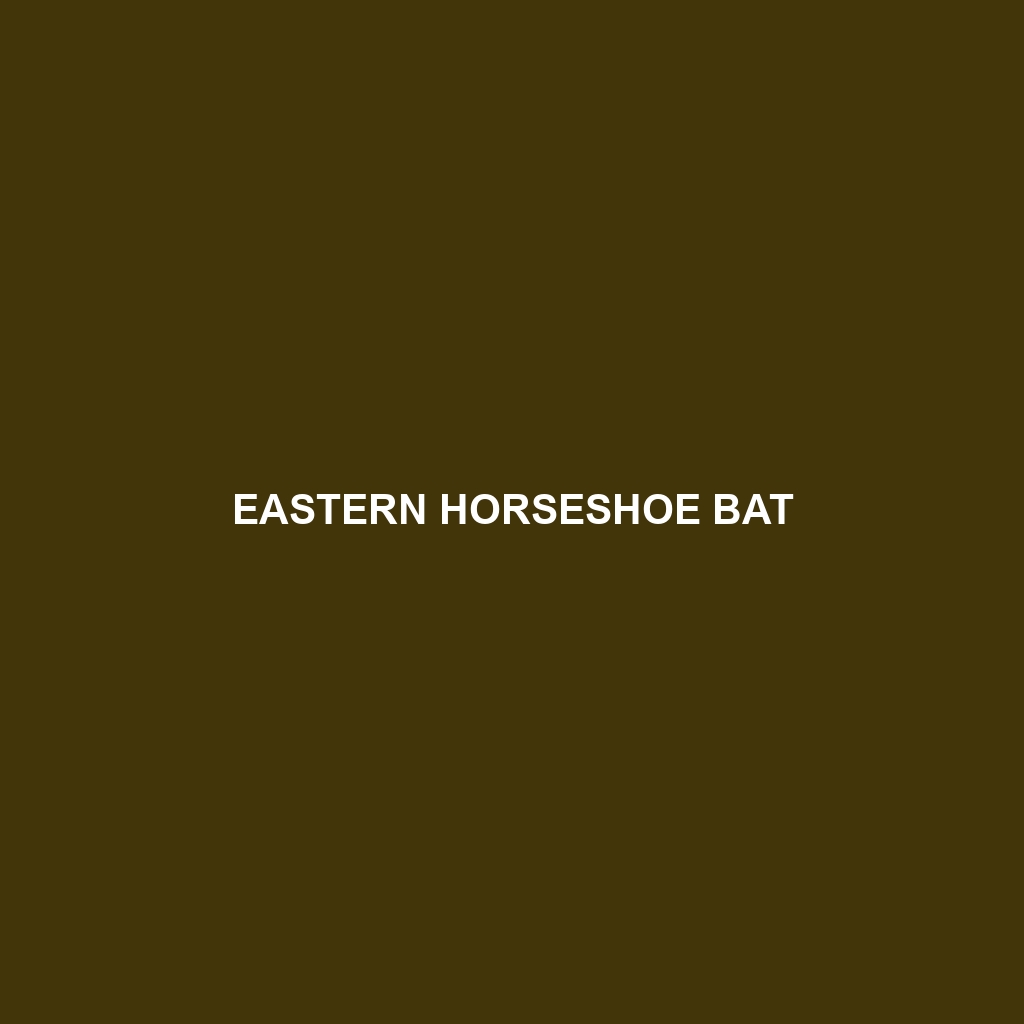Eastern Horseshoe Bat
Common Name: Eastern Horseshoe Bat
Scientific Name: Rhinolophus lepidus
Habitat
The Eastern Horseshoe Bat is primarily found in the temperate forests and wooded areas of Eastern Asia. Its geographic range includes regions in China, Korea, and parts of the Russian Far East. These bats typically roost in caves, old buildings, and tree hollows, favoring environments that provide shelter and proximity to their feeding grounds.
Physical Characteristics
Eastern Horseshoe Bats are medium-sized bats, measuring approximately 5 to 8 cm in body length with a wingspan of about 26 to 30 cm. They have a distinctive horseshoe-shaped noseleaf that aids in echolocation. Their fur is soft and dense, characterized by a brown to dark gray coloration, with lighter underparts. A notable feature of this species is its robust, broad wings, which are longer than those of other bat species, making them expert flyers.
Behavior
These bats are primarily nocturnal, emerging at dusk to forage for food. They exhibit social behavior, often roosting in colonies that can number from a few individuals to hundreds. Eastern Horseshoe Bats are known for their unique echolocation calls, which are critical for navigating through dark environments and finding prey. During the day, they tend to rest in secluded roosting sites, minimizing disturbance from predators or human activity.
Diet
The diet of the Eastern Horseshoe Bat consists mainly of insects, particularly moths and beetles. They utilize their echolocation abilities to detect and capture flying insects in mid-air. Occasionally, they may also consume other small invertebrates. Their role as insectivores makes them vital for maintaining insect population balance in their habitats.
Reproduction
Eastern Horseshoe Bats typically breed once a year, with mating occurring in late summer or early autumn. Following a gestation period of about 45 to 50 days, females give birth to one or two pups in late spring. The young bats remain dependent on their mothers for several weeks and begin to fly shortly after weaning. Mothers often roost together with their young in warmer, protected environments during this period.
Conservation Status
Currently, the Eastern Horseshoe Bat is classified as vulnerable due to habitat loss and environmental changes, leading to declining populations. Conservation efforts focus on preserving their natural habitats, reducing human disturbances, and raising awareness about the ecological importance of bats in general.
Interesting Facts
One fascinating aspect of the Eastern Horseshoe Bat is their remarkable echolocation abilities, which allow them to detect objects as fine as a human hair in complete darkness. Additionally, they are capable of flying at speeds of up to 30 km/h while foraging for food.
Role in Ecosystem
The Eastern Horseshoe Bat plays a crucial role in the ecosystem as a natural pest controller. By feeding on various insects, they help regulate insect populations, thus assisting in the health and balance of their environments. Their presence also serves as a bioindicator of ecosystem health, reflecting the overall well-being of forest habitats.
This format provides a comprehensive overview of the Eastern Horseshoe Bat, incorporating SEO-friendly keywords while maintaining a structured and readable format.

